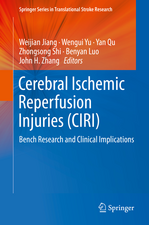Principles of Brain Evolution
Autor Georg F. Striedteren Limba Engleză Hardback – 20 oct 2004
Preț: 993.79 lei
Preț vechi: 1184.44 lei
-16% Nou
Puncte Express: 1491
Preț estimativ în valută:
190.16€ • 198.54$ • 157.38£
190.16€ • 198.54$ • 157.38£
Carte tipărită la comandă
Livrare economică 24-31 martie
Preluare comenzi: 021 569.72.76
Specificații
ISBN-13: 9780878938209
ISBN-10: 0878938206
Pagini: 436
Ilustrații: 139 illustrations
Dimensiuni: 236 x 183 x 28 mm
Greutate: 1.06 kg
Editura: Oxford University Press
Colecția OUP USA
Locul publicării:New York, United States
ISBN-10: 0878938206
Pagini: 436
Ilustrații: 139 illustrations
Dimensiuni: 236 x 183 x 28 mm
Greutate: 1.06 kg
Editura: Oxford University Press
Colecția OUP USA
Locul publicării:New York, United States
Recenzii
This text will surely supersede its stated goal, to pique the interest in brain evolution of advanced undergraduate and graduate students. From the very beginning, with the fascinating example of Bumpus' sparrows of 1898, we know this book will be more witty and lively than most on this topic. Throughout the remaining text, Striedter succeeds repeatedly by explicating the main principles of brain evolution without encyclopedic or dry detail. As a result of this new text, we can certainly anticipate that young students of evolutionary neuroscience will be enticed to address questions that currently lack much empirical data."
This volume offers an enduring and succinct summary of the vast archive of morphological data that reveals the wondrous diversity of brains."
Georg Striedter has produced a wonderful book that discusses current understandings of brain evolution. Overall, this is a volume that most neuroscientists will enjoy reading, and some of them, myself included, will find it useful as a textbook for graduate students and advanced undergraduates."
In Principles of Brain Evolution, Striedter accomplishes several important goals: he conveys the many aspects of brain structure and function that are conserved across species; he illustrates in a clear manner why species differences are real and should not be dismissed; he explores the complex issue as to how conservation and divergence
This volume offers an enduring and succinct summary of the vast archive of morphological data that reveals the wondrous diversity of brains."
Georg Striedter has produced a wonderful book that discusses current understandings of brain evolution. Overall, this is a volume that most neuroscientists will enjoy reading, and some of them, myself included, will find it useful as a textbook for graduate students and advanced undergraduates."
In Principles of Brain Evolution, Striedter accomplishes several important goals: he conveys the many aspects of brain structure and function that are conserved across species; he illustrates in a clear manner why species differences are real and should not be dismissed; he explores the complex issue as to how conservation and divergence
Notă biografică
Georg Striedter is Associate Professor in the Department of Neurobiology and Behavior at the University of California, Irvine. He received his undergraduate training at Cornell University and obtained a Ph.D. from the University of California, San Diego in 1990. Most of his early research focused on the evolution of various functionally interesting pathways in fish brains. He then went on to study avian brains as a postdoctoral researcher at the California Institute of Technology. Specifically, he studied how and why parrot brains are specialized for imitating sounds. Dr. Striedter continued this work as a faculty member at UC Irvine and broadened it to include questions about how avian brains differ from those of other vertebrates in terms of structure, function and development. In 1998, he received the C. J. Herrick Award for his contributions to comparative neuroanatomy.


























